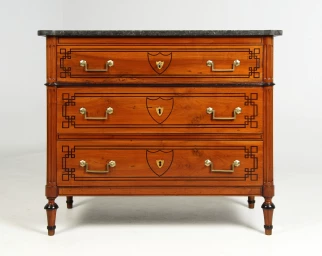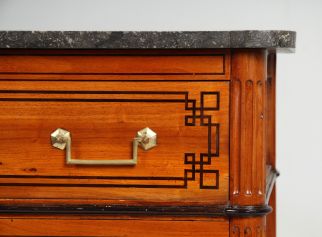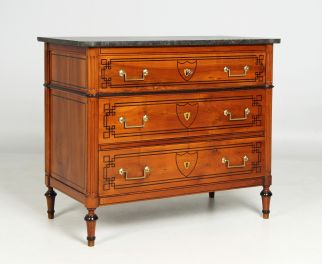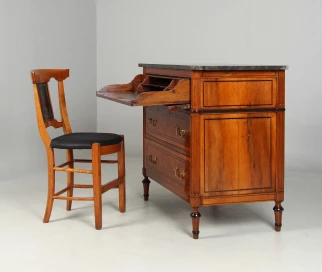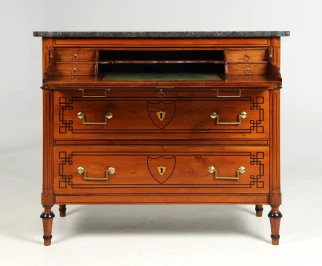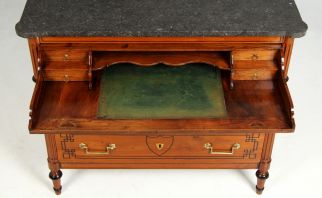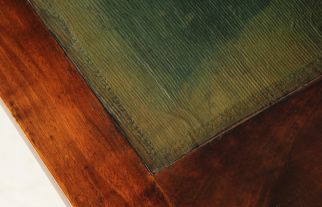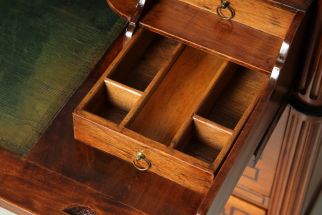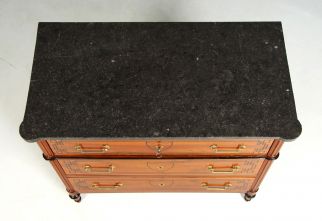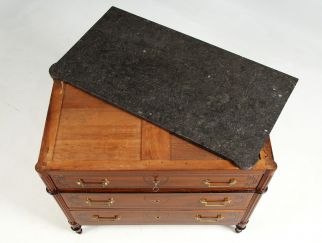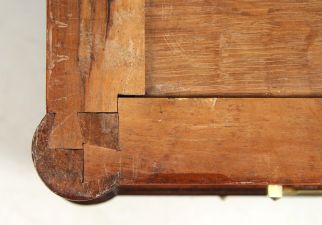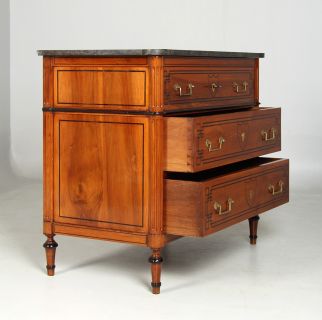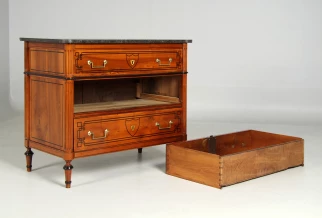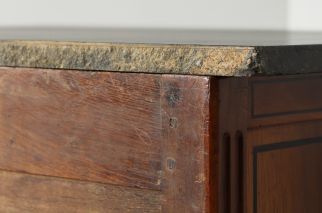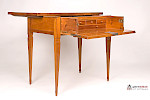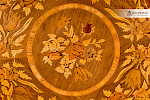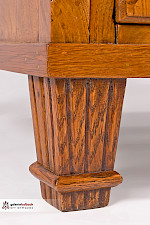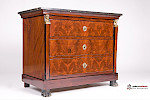Fine Directoire chest of drawers with secretary compartment
France
Cherry tree and others
late 18th century
Dimensions: H x W x D: 88 x 103 x 55 cm - Height of writing surface: 70 cm
Description:
Chest of drawers made of solid cherry wood standing on round, downwardly tapering legs.
The drawer fronts are characterised by their geometric linear design in dark contrasting wood. The two-line inlays form a strictly symmetrical pattern with interlocking, graphic corner frames.
The straight-lined brass handles consistently follow the strict architecture of the marquetry in their functional design.
The coat of arms-shaped brass key plates are set into the wood and, with their large framing that follows the shape, are in calm dialogue with the clear lines of the rest of the furniture front.
A dark, horizontal moulding divides the front into an upper and a lower section.
The carcase is flanked by fluted, column-shaped pilaster strips.
The top drawer front, designed as a writing flap, is a wonderful surprise. A fully functional secretary compartment with four small drawers arranged in a staircase can be pulled out, one of which is equipped with the original compartmentalisation for pens, grit and inkwells. The writing surface is covered with a green, florally punched original leather.
The loosely fitted cover plate made of black Belgian granite follows the rounded shape of the body at the corners. On the back, it shows the typical, unfinished broken edge - an authentic feature of original stone slabs from the 18th century.
Interesting facts:
Chests of drawers with an integrated writing function were particularly popular in the late 18th and early 19th century, as they fulfilled the requirements of functionality and space economy in equal measure. Particularly in the often cramped living conditions of the urban middle classes, they offered the possibility of integrating a fully-fledged writing desk into a formally restrained piece of furniture. The combination of desk and chest of drawers also corresponded to the rationalised zeitgeist of the revolutionary years, which aimed for clarity, order and practicality.
Condition:
Restored, very well-preserved original condition with age-appropriate patina. The wood has been carefully cleaned and given a shellac polish.
Granite top with slight signs of wear. Writing leather with age-related discolouration, but structurally intact and original.
Article found under: Chests of drawers
Video Writing table Directoire
Also interesting
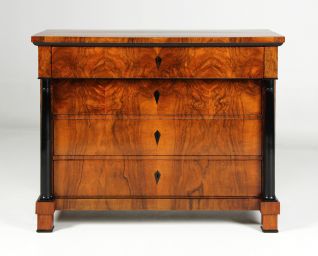
Biedermeier chest of drawers
Southern Germany
Walnut
Biedermeier around 1820

Large Empire chest of drawers
Paris
Mahogany
early 19th century
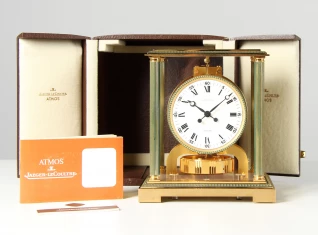
Jaeger LeCoultre - Atmos Vendome in a full set
Switzerland
Brass gold plated
Year of manufacture 1978

